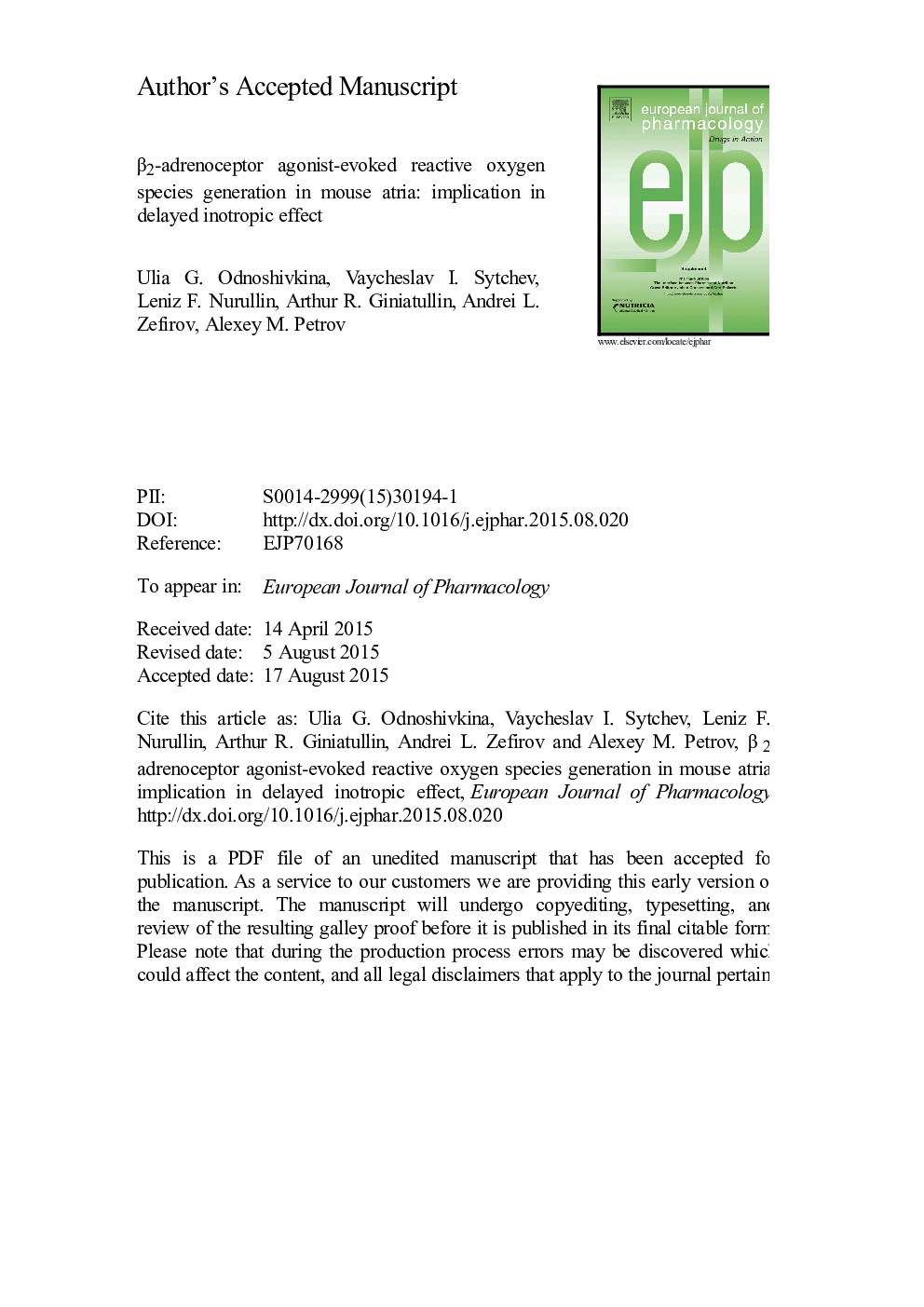| Article ID | Journal | Published Year | Pages | File Type |
|---|---|---|---|---|
| 5826927 | European Journal of Pharmacology | 2015 | 41 Pages |
Abstract
Fenoterol, a β2-adrenoceptor agonist, has anti-apoptotic action in cardiomyocytes and induces a specific pattern of downstream signaling. We have previously reported that exposure to fenoterol (5 μM) results in a delayed positive inotropic effect which is related to changes in both Ca2+ transient and NO. Here, the changes in reactive oxygen species (ROS) production in response to the fenoterol administration and the involvement of ROS in effect of this agonist on contractility were investigated in mouse isolated atria. Stimulation of β2-adrenoceptor increases a level of extracellular ROS, while intracellular ROS level rises only after removal of fenoterol from the bath. NADPH-oxidase inhibitor (apocynin) prevents the increase in ROS production and the Nox2 isoform is immunofluorescently colocalized with β2-adrenoceptor at the atrial myocytes. Treatments with antioxidants (N-acetyl-l-cysteine, NADPH inhibitors, exogenous catalases) significantly inhibit the fenoterol induced increase in the contraction amplitude, probably by attenuating Ca2+ transient and up-regulating NO production. ROS generated in a β2-adrenoceptor-dependent manner can potentiate the activity of some Ca2+channels. Indeed, inhibition of ryanodine receptors, TRPV-or l-type Ca2+-channels shows a similar efficacy in reduction of positive inotropic effect of both fenoterol and H2O2. In addition, detection of mitochondrial ROS indicates that fenoterol triggers a slow increase in ROS which is prevented by rotenone, but rotenone has no impact on the inotropic effect of fenoterol. We suggest that stimulation of β2-adrenoceptor with fenoterol causes the activation of NADPH-oxidase and after the agonist removal extracellularly generated ROS penetrates into the cell, increasing the atrial contractions probably via Ca2+ channels.
Keywords
Related Topics
Life Sciences
Neuroscience
Cellular and Molecular Neuroscience
Authors
Ulia G. Odnoshivkina, Vaycheslav I. Sytchev, Leniz F. Nurullin, Arthur R. Giniatullin, Andrei L. Zefirov, Alexey M. Petrov,
